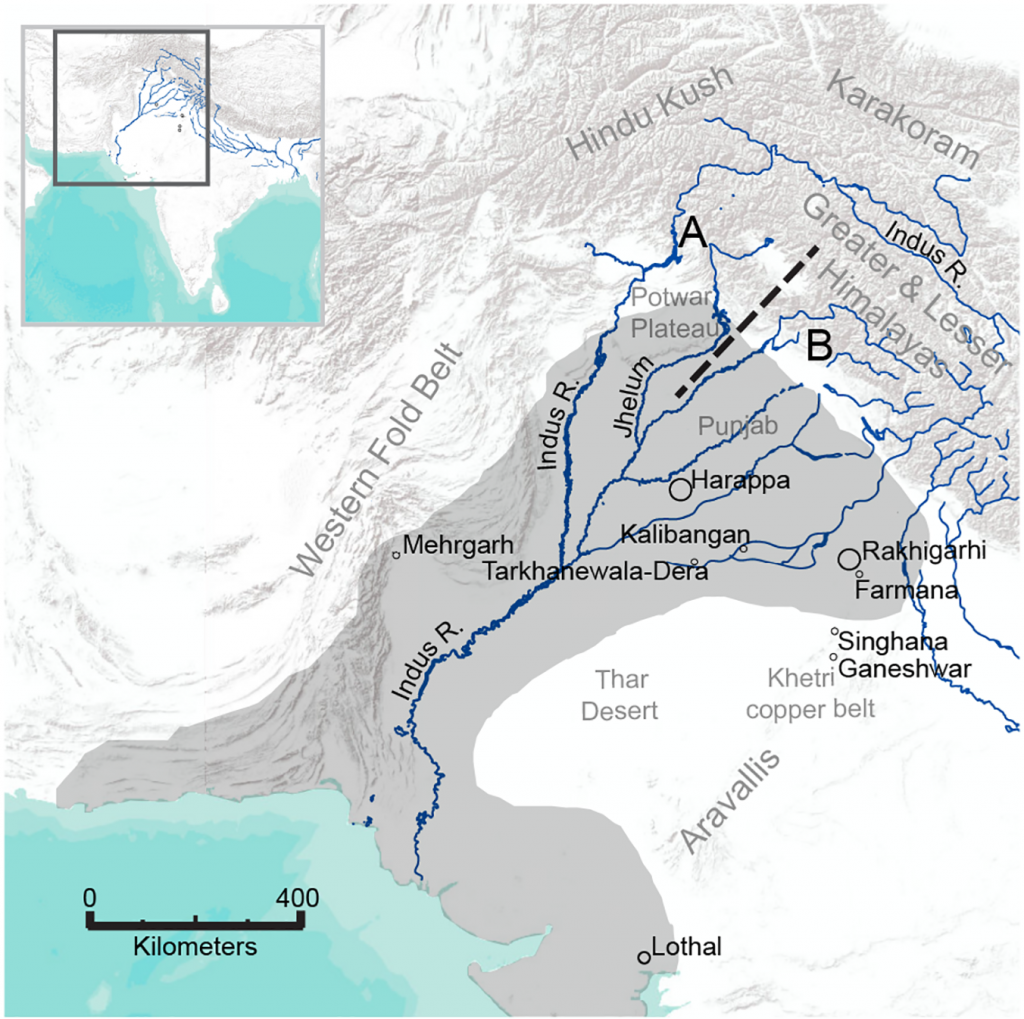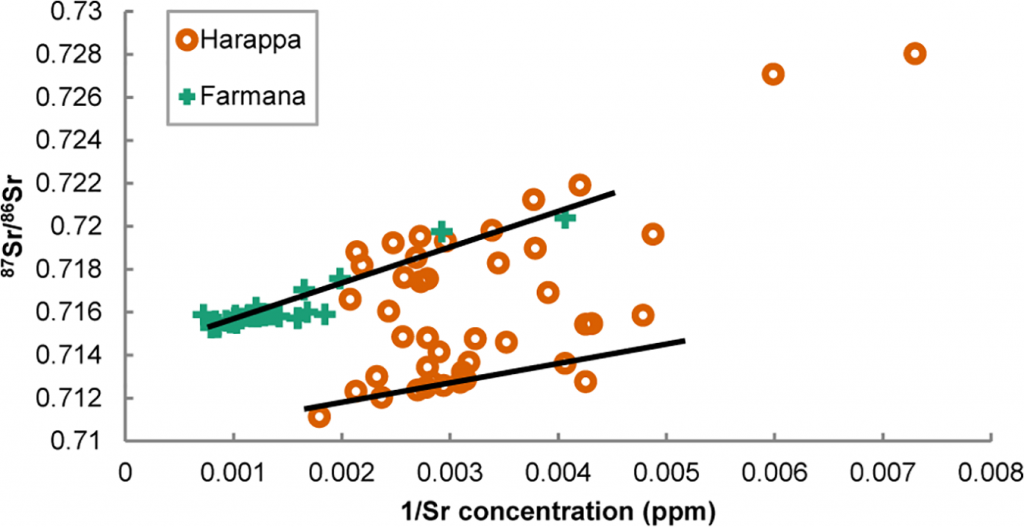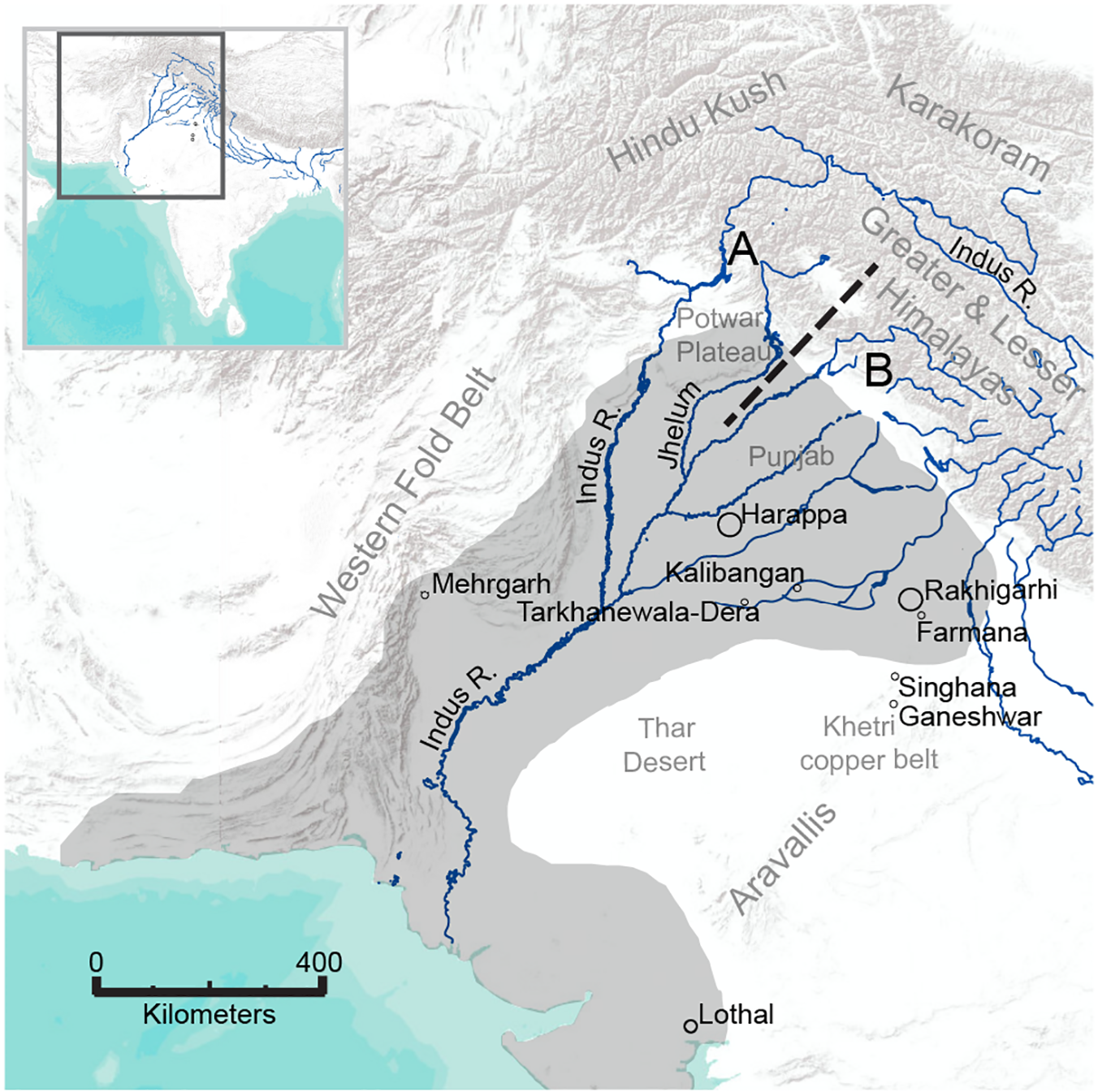Four-thousand-year-old teeth can tell a story of ancient Indus civilization migratory habits.
New interdisciplinary research involving isotopic analysis of four-thousand-year-old tooth enamel has shed light on the migratory habits of ancient Indus civilizations. The innovative study by Dr. Benjamin Valentine (former UF PhD student) and UF researchers Dr. George Kamenov and Dr. John Krigbaum was recently featured in an article on the front page of the University of Florida web news site.
A recent journal article (Valentine et al., 2015, PLOS ONE) describes the use of lead and strontium isotopic ratios measured from the enamel of a variety of teeth excavated from grave sites in the remains of the ancient city of Harappa in the Punjab Province of Pakistan. Valentine et al., discovered that isotopic ratios measured in tooth enamel changed from early to later teeth. This variation indicates a change in the isotopic characteristics of the local environment; therefore, Valentine et al., conclude the previously thought stationary ancient Indus civilizations were in fact mobile.
“All told, these novel methods provide windows into the life history of past people and underscore the role of interdisciplinary approaches to illuminate dynamics of human migration.” – Dr. John Krigbaum
Read More: Tales teeth can tell: Dental enamel reveals surprising migration patterns in ancient Indus civilizations – University of Florida Web News Feature
Article: Valentine, B., Kamenov, G. D., Kenoyer, J. M., Vasant, S., Mushrif-Tripathy, V., Otarola-Castillo, E. & Krigbaum, J. (2015). Evidence for Patterns of Selective Urban Migration in the Greater Indus Valley (2600-1900 BC): A Lead and Strontium Isotope Mortuary Analysis, PLOS ONE, doi:10.1371/journal.pone.0123103. (Open Access).
Dr. Benjamin Valentine, who received his doctoral degree in 2013 from the University of Florida, is now a Postdoctoral Teaching Fellow in the Department of Anthropolgy at Dartmouth. Dr. George Kamenov, isotope geologist, is an Associate In Geological Sciences in the Department of Geological Sciences and Dr. John Krigbaum, biological anthropologist, is an Associate Professor and Undergraduate Coordinator in the Department of Anthropology; both work at the University of Florida.

Dashed line indicates approximate boundary between geochemical catchments. Catchment A, including the Potwar Plateau and adjacent drainages of the Hindu Kush and Karakoram, is isotopically different to Catchment B, including the Punjab tributaries that drain the Greater and Lesser Himalayas.
doi:10.1371/journal.pone.0123103.g001

The less radiogenic mixing system (87Sr/86Sr < ~0.716) is likely associated with Catchment A above. The more radiogenic mixing system (87Sr/86Sr > ~0.716) is likely associated with Catchment B above. doi:10.1371/journal.pone.0123103.g001
